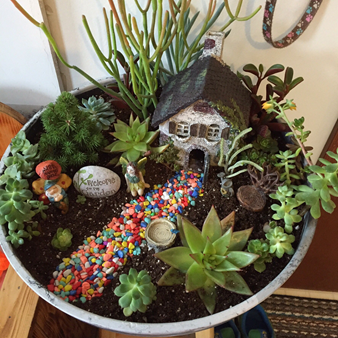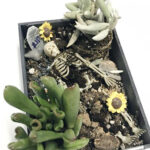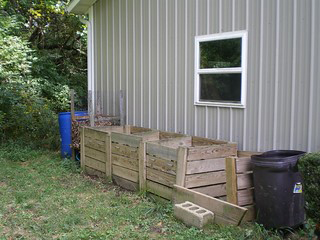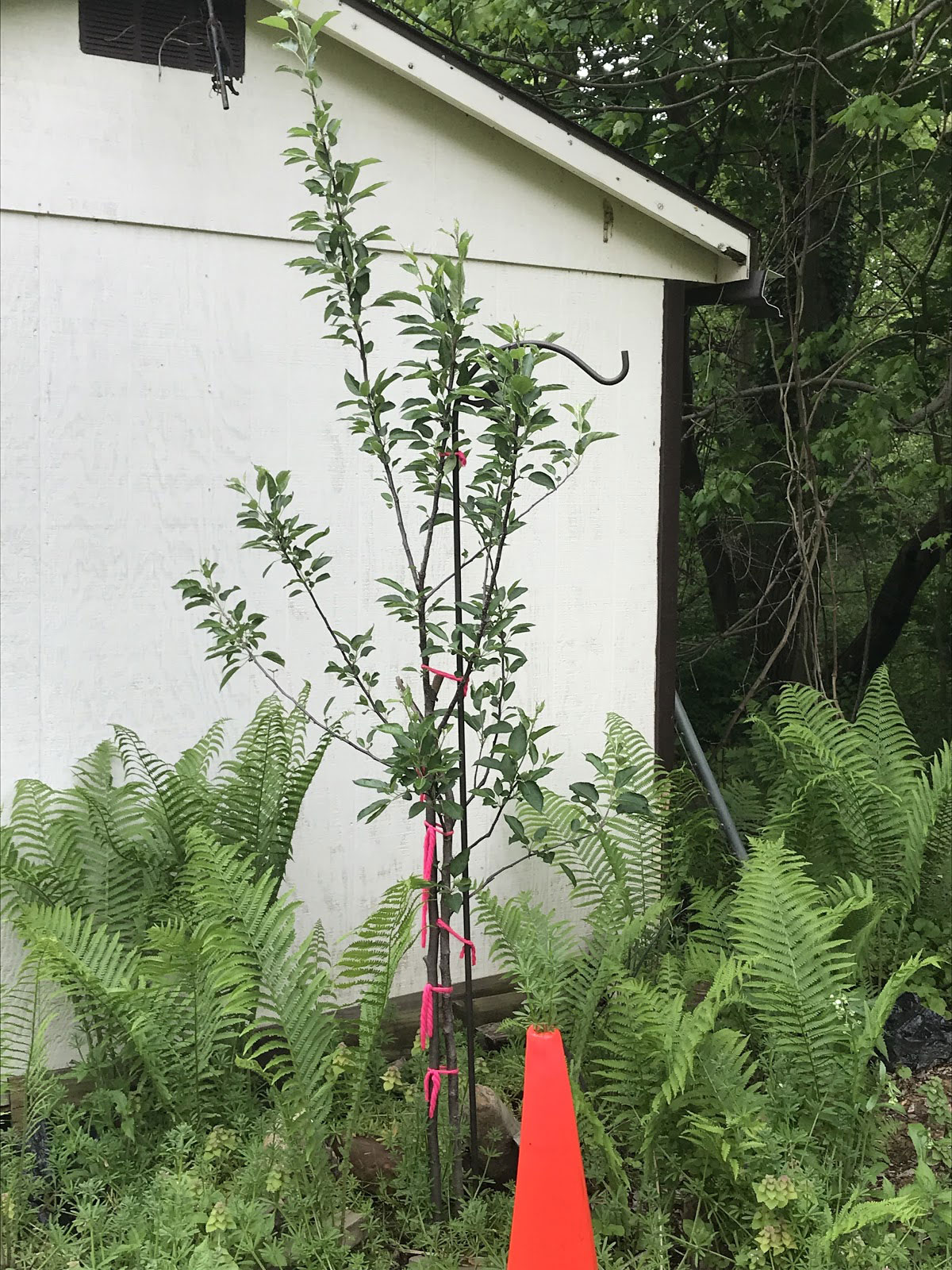by Ana Morlier, The Crazy Plant Lady
The Crazy Plant Lady’s Gift-Giving Guide
Now that we’ve gotten our first taste of connecting with relatives over the Thanksgiving Day holiday, it’s time to prepare for round two! As the 25th of December draws near, we all find ourselves scrambling to find presents for those family members who can’t decide on what they want for Christmas or are hard to buy for. So, why not buy them the gift of kin? In the cold season of exterior plant decay, give them an indoor plant to keep them warm all year. ‘Tis the season of gift giving, and here is my guide to bring cheer to you and the gift recipient. Here are my top favorite plant-related gifts! Some items on my list may or may not be a subtle hint of my Christmas list for my own family.
Best Homemade Gifts
Who says garden stakes are just for the outdoors? Create your own with markers or paint; draw animals, fun designs, or even memes!
Flower pots are the best gift to personalize! Color the exterior with markers, paint, duct tape, or other mediums. Personalize it with a kind message or drawing.
Create a magical scene using succulent plants to act as shrubs or trees! Materials you may need include a large container (such as a stockpot or plastic tub), dirt, succulents (the more colorful the better), small furniture, fairies or toy figurines, gravel, pebbles, sand, and other accessories of your choosing!
My Favorite Practical Gifts
Spray bottles. A backup spray bottle is always helpful. I have a spray bottle for plants on each level of my house! Spray bottles disperse moisture much better than traditional watering cans do and present ease of use.
Plant Scissors (regular scissors will do as well). These are nifty for deadheading flowers or decayed leaves. Gardeners will be less likely to accidentally deadhead lilies with their pizza scissors!
Gloves. Everyone could use more garding/planting gloves.
Potting Soil. Potting soil is perfect for gardeners who like to buy new plants for projects or start new seedlings.
Composter. These can get pretty expensive, so shop with caution.
Hedge clippers. Every gardener’s must-have.
Self-watering planter. A self-watering planter is perfect for all gardeners, no matter their experience level. Even experienced gardeners need a break from watering their plants!
Gift cards to local nurseries. These can help support plant life and local businesses while letting gardeners purchase the new plants they want.
Plant subscription boxes. Plant subscription boxes expose gardeners to new plants that might not be common at the local plant store. Succulents Box is the best subscription for those on a budget, and The Sill provides plants and resources for budding gardeners.
My Favorite Plants…That Thrive Even In the Care of a Non-Green Thumb
Mother of Millions. Mother of Millions is a prosperous succulent that grows quickly, looks impressive, and can grow despite neglect.
Fern. Ferns are elegant plants and survive well in low-light conditions.
Calathea plants. Calathea plants prosper in low light and are unique with their striped leaves (sometimes tinged with white or pink) that look festive no matter the season.
Aloe plant. Aloe is an extremely tough plant to harm. It appears chic in any container you put it in and helps soothe burns, acne, and itchy skin.
Spider plant. Spider plants are luscious, decorative plants that produce many seedlings in a short span of time. I’ve found that they are easy to revive if neglected (just by watering normally) and survive even in the colder temperatures of one’s house.
Air plants. Air plants can be found by themselves or in whimsical containers at most gardening stores. These plants scarcely need any water or much attention and look funky in any decorative container you put them in.
Bamboo. Lucky bamboo requires only a container, rocks (as a base), distilled water, and low light to survive. They make lovely table centerpieces and ship on Amazon.
Now that you are armed with this list and a budget, I hope your gift-giving is successful! Another wonderful present to give to others is your presence. Take time to celebrate the season not just for the gifts, but for each other’s company—now that we can all appreciate it again. May your Christmas be filled with joy, kinship, and, most importantly, PLANTS!
Credit to Dacey ORR of The Spruce, Kayla Fratt of PlantSnap, and Lauren Ro of The Strategist. Thanks to the staff of The Catoctin Banner and the readers for this one-year anniversary of my first article!

A humble fairy abode is pictured surrounded by succulents.





